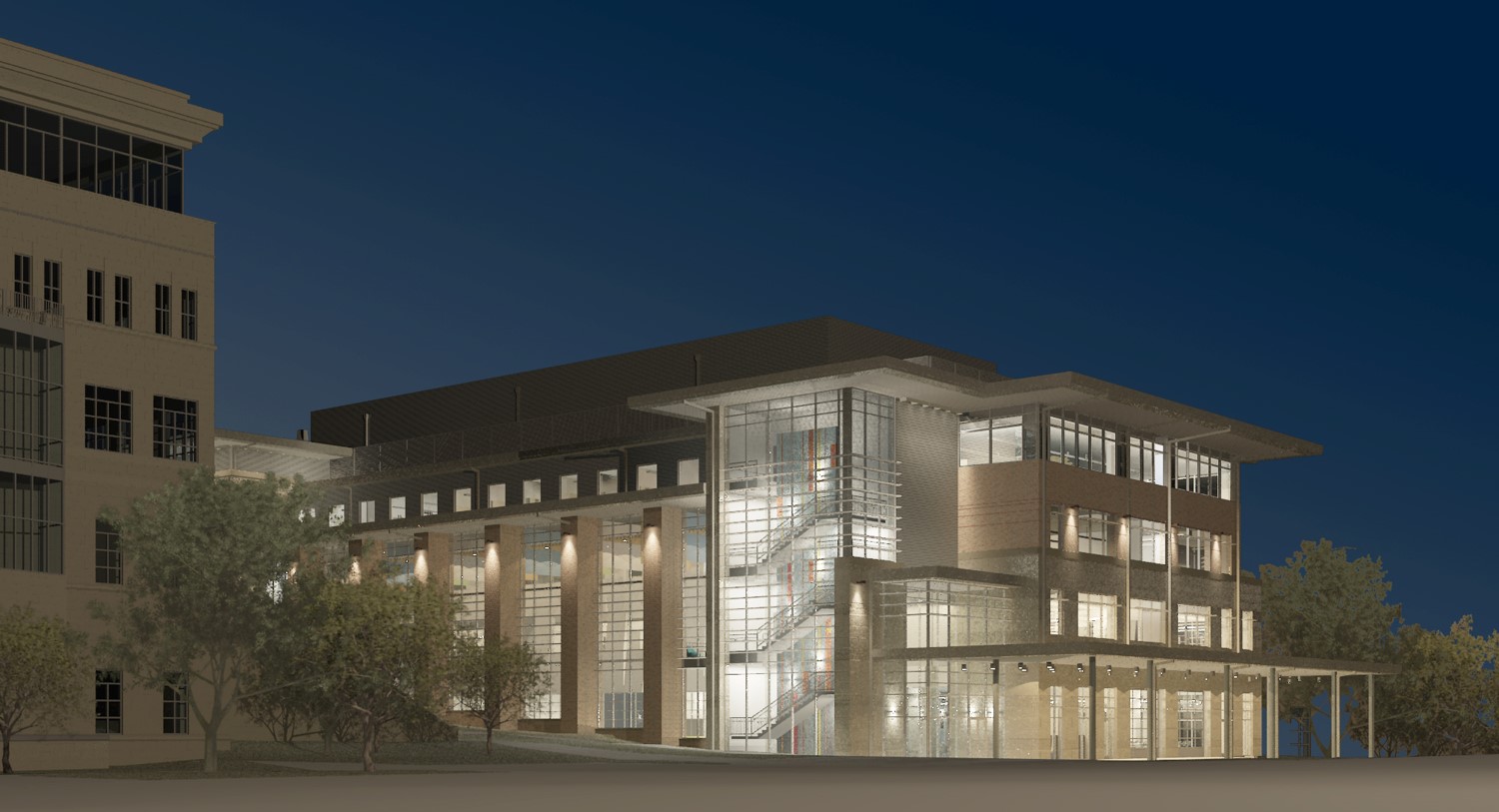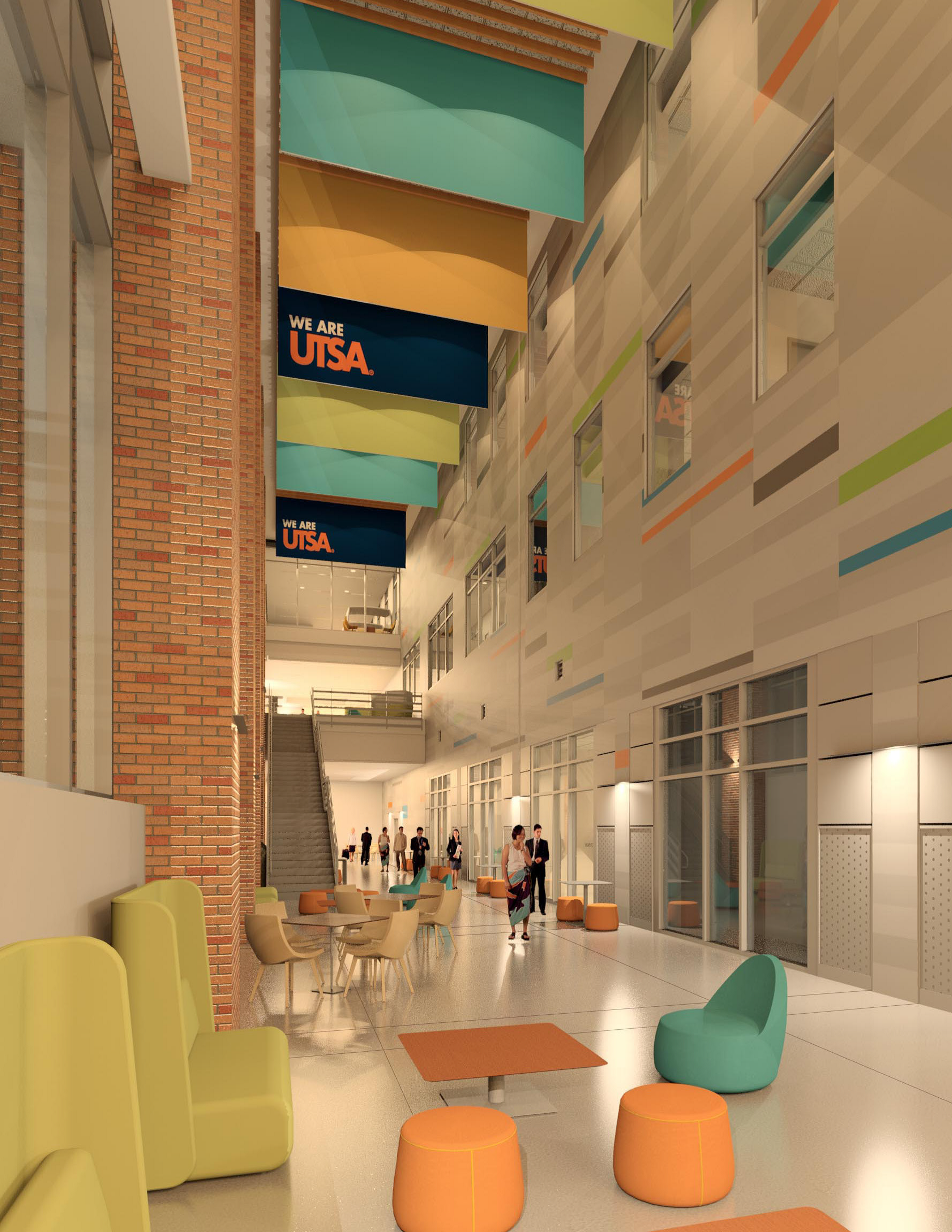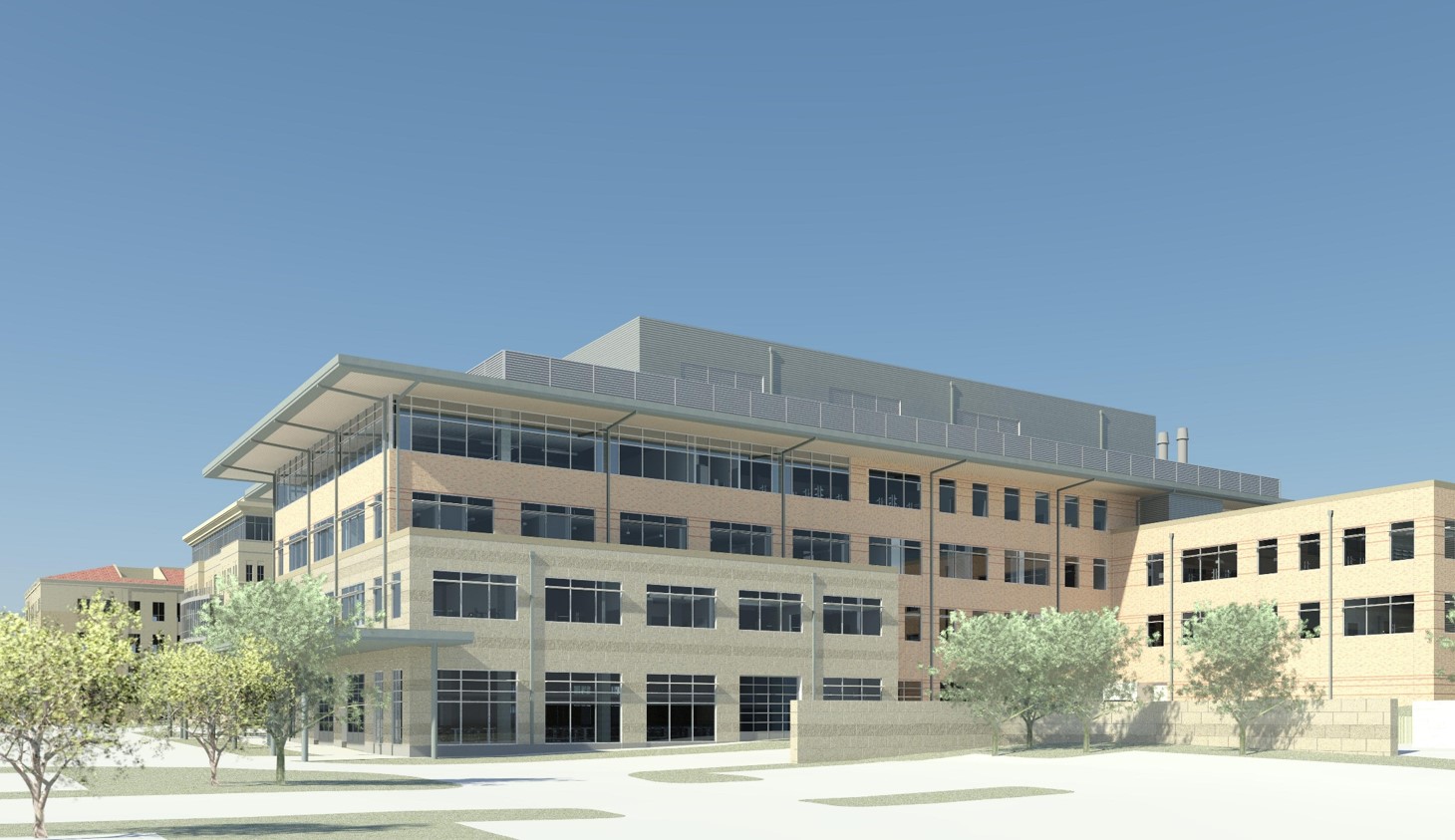(June 9, 2017) -- The University of Texas at San Antonio today broke ground on its $95 million Science and Engineering Building (SEB), the largest construction project in university history.
The 153,000 square foot building, which is slated to open in 2020, will provide laboratory, classroom and collaborative space for UTSA's academic and research programs in brain health, chemical engineering, biology and chemistry.
"The Science and Engineering Building will be home to world-changing discovery through teaching, learning and research," said President Ad Interim Pedro Reyes. "The work that takes place here will carry on UTSA's tradition of excellence and meaningfully contribute to solving some of the most complex problems we face as a global community."

The SEB will serve as a hub for UTSA’s academic and research programs in brain health, chemical engineering, biology and chemistry.
UTSA research expenditures total nearly $60 million each year. More than $30 million of that total is within the College of Sciences. These researchers and students focus on neuroscience, nanotechnology, stem cells, medicinal drugs, infectious diseases and vaccine development, and cybersecurity, where UTSA ranks number one in the nation in undergraduate education and research.
Additionally, more than 40 UTSA faculty members with expertise in biology, biophysics, chemistry, electrical and computer engineering, kinesiology, health and nutrition, and psychology have created a university-wide Brain Health Initiative. UTSA researchers are conducting collaborative studies to better understand how the brain functions and how mechanisms impact systems like learning, memory and motivation. Focus areas include brain signaling and circuits, neurodegenerative disease, traumatic brain injury, regenerative medicine, medicinal chemistry, neuroinflammation and drug design.
"Some of the greatest challenges we deal with as a society today surround the brain and devastating diseases including Alzheimer's and Parkinson's. Our research is advancing a greater understanding of how the brain works, how we address brain injuries, particularly with soldiers, and how we combat degenerative conditions," said George Perry, dean of the UTSA College of Sciences.
The Science and Engineering Building will also house UTSA's new chemical engineering program, which launches this fall. The bachelor's program will prepare students for careers in the oil and gas, biotechnology, pharmaceuticals, environmental engineering and materials engineering industries. The building will include a two-story distillation column that will allow chemical engineering students to study different types of mixtures, just as practicing chemical engineers do in industrial facilities. The instrument was made possible by a gift from Bill and Margie Klesse through the Klesse Foundation.

The building will feature 17,000 square feet of engineering makerspace, a workshop for students to develop their creativity and turn their innovations into tangible applications.
The SEB will also include 17,000 square feet of engineering makerspace, a dedicated gathering area where people with similar engineering and technology interests can collaborate on projects by sharing ideas, equipment, materials and knowledge. The floor plan also includes space for the Center for Innovation and Technology Entrepreneurship to help faculty members and students take UTSA discoveries, products and services to market.
"Having the resources this building will bring to our chemical engineering program will make UTSA an even more powerful research university and help us recruit additional top students and researchers," said UTSA College of Engineering Dean JoAnn Browning. "The makerspace is an especially valuable tool. For the first time, our engineering students will have a dedicated space to apply their knowledge and innovative concepts and turn them into tangible applications."
Another of the building's unique features will be the magnitude of its exterior and interior glass. Many of the laboratories in the building will be surrounded in glass so students and visitors can witness the work underway, a concept referred to as science on display. The goal is to encourage interaction among students from different majors and create opportunities for students to connect with people who have different interests. In addition to engaging more students in research, the approach has been shown to improve student retention and graduation rates.

The SEB is the first UTSA building to use a stone and brick blend. This design will become standard for future university buildings.
The SEB will be the first new building completed at UTSA since the North Paseo Building opened on the Main Campus in 2014. It will be located east of the Biotechnology, Sciences and Engineering (BSE) Building.
The majority of the funding for the $95 million building comes from tuition revenue bonds, approved by the Texas legislature during its 2015 session.
UTSA is ranked among the top 400 universities in the world and among the top 100 in the nation, according to Times Higher Education.
Explore the UTSA College of Sciences and College of Engineering.
Learn about UTSA Brain Health Initiative and chemical engineering program.
See SEB floor plans and renderings, and learn about its construction.
Read UT System Regent Rad Weaver's remarks from the groundbreaking ceremony.
Connect with UTSA online at Facebook, Twitter, YouTube, Instagram and LinkedIn.
UTSA Today is produced by University Communications and Marketing, the official news source of The University of Texas at San Antonio. Send your feedback to news@utsa.edu. Keep up-to-date on UTSA news by visiting UTSA Today. Connect with UTSA online at Facebook, Twitter, Youtube and Instagram.
Move In To COLFA is strongly recommended for new students in COLFA. It gives you the chance to learn about the Student Success Center, campus resources and meet new friends!
Academic Classroom: Lecture Hall (MH 2.01.10,) McKinney Humanities BldgWe invite you to join us for Birds Up! Downtown, an exciting welcome back event designed to connect students with the different departments at the Downtown Campus. Students will have the opportunity to learn about some of the departments on campus, gain access to different resources, and collect some giveaways!
Bill Miller PlazaCome and celebrate this year's homecoming at the Downtown Campus with food, games, giveaways, music, and more. We look forward to seeing your Roadrunner Spirit!
Bill Miller PlazaThe University of Texas at San Antonio is dedicated to the advancement of knowledge through research and discovery, teaching and learning, community engagement and public service. As an institution of access and excellence, UTSA embraces multicultural traditions and serves as a center for intellectual and creative resources as well as a catalyst for socioeconomic development and the commercialization of intellectual property - for Texas, the nation and the world.
To be a premier public research university, providing access to educational excellence and preparing citizen leaders for the global environment.
We encourage an environment of dialogue and discovery, where integrity, excellence, respect, collaboration and innovation are fostered.